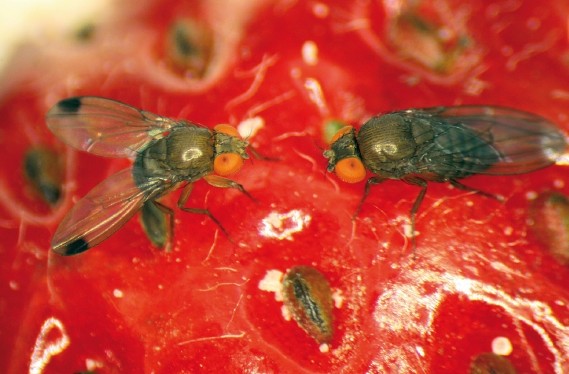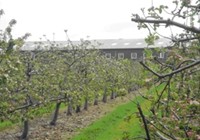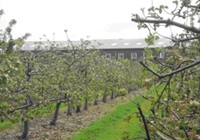Foreign invader threatens UK fruit

Unlike common fruit flies that attack rotting and fermented fruit, Drosophila suzukil, or Spotted-Wing Drosphila (SWP) also attacks developing fruits on the plant. Other fruit flies are not able to lay eggs in intact, unripe fruit.
The fly reached the US in 2008, Italy in 2009 and spread to Canada, Russia, Spain and France last year.
EMRA entomologist Michelle Fountain told FoodManufacture.co.uk: “The risk is very high. The flies are very small. The main worry is that it could arrive with imported fruits, although we’re not that far from Northern France [for windborne migration].”
Taste for strawberries
Fountain said that SWD had caused damage to stone, bush and cane fruits, as well as strawberries. “It’s really stone fruits and soft fruits, particularly raspberries. Although the fly also has a taste for strawberries, unfortunately,” she said.
But Fountain said that grapes, apples (harvested in September) and pears (harvested in September/October) could also be under a lesser threat.
Adult flies are brownish-yellow, with black bands on the abdomen, and are 2.5-3.0mm long with bright red eyes.
EMRA recommends that growers examine ripening fruit for indented scarring with the pest’s “tell-tale filamentous breathing tubes extruding”.
“Ripening, scarred or rotting fruits should be opened to inspect for larvae and pupae,” the association said.
It added that removal of egg-laying sites by disposing of leftover fruit was necessary to prevent populations building up.
No sightings yet
While EMRA had little information on insecticide use, it said that spinosad, imidacloprid, actamiprid and pyrethroid varieties may control the flies’ adult phase.
One other control measure suggested by EMRA included mass trapping, and Fountain said that the fly would be hard to eradicate once established, although if it were detected in, say, a pack house, “hygienic waste management” could see it eradicated.
A spokesman for Fourayes, which produces fruit fillings for food manufacturers and grows Bramley apples told FoodManufacture.co.uk that the firm’s agronomist had not sighted the fly anywhere in the UK.
He said the concern was that the fly arrived with fruit imports from the continent, although the firm believed it wouldn’t affect apples and pears, bar one soft variety of the latter, but would mainly hit plums, cherries and strawberries.
“I thought to myself, ‘thank God’ we don’t grow pears anymore,” he added.
Asked if the fly might hit organic growers particularly hard, given their non-reliance on pesticides, he said: “I imagine it could.”
The spokesman added that organic growers already struggled to control rosy apple aphid and pear sucker nymph infestations.
Fountain said a lack of knowledge disqualified her from making recommendations on organic pesticide use, but said it could cause a problem for growers.
However, she said that less usage of broad-spectrum pesticides on organic fruits meant that there was “more predatory control” that could keep SWP's numbers down.
A Fresh Produce Consortium (FPC) spokeswoman told FoodManufacture.co.uk that the trade body was aware of the potential SWD danger, and had sent out an update alert to members earlier this year.
















